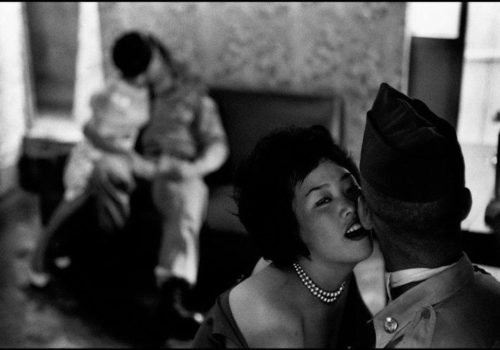Starting in the mid-1950s, the work of one of the masters of reportage photography, René Burri, began to appear in the press. The photojournalist’s extensive archives—with no less than 300 publications—allow the depth of his work to be glimpsed. Burri’s photographs resonate within the history of photography, first because of the sheer number of pictures he’s taken, but also as a result of how often his work appeared in the illustrated press.
The influence of Magnum is evident in the relationship between René Burri and the illustrated press. Henri Cartier-Bresson exercised great control over his contact sheets to ensure that the composition of his photographs was perfect. However, despite the Magnum’s copyright policies—photo editors were not allowed to crop the pictures—several of them were trimmed on one or more sides, even into the 1960s, as photo editors ignored the photographer’s vision and original framing.
Burri’s work reflected the evolution of the illustrated press. When his pictures first appeared, most of the magazines featured covers, with headlines and advertisements in color, whereas the photographs remained in black-and-white. A few magazines decided to boldly experiment with color. Burri, who until then had been shooting in black-and-white, started to carry a new camera around his neck: an Ektachrome.
He soon mastered the new mode of composition, balancing out color tones to give a new perspective on reality in reports shot in the 1970s and ‘80s in Chicago and New York, like the politically charged stories about the reopening of the Suez Canal in 1974. The subjects of the photographs were highlighted through careful composition, relying on color for their construction. Burri became an important figure in the world of color photography, sitting in the company of other undisputed masters like Ernst Haas, Saul Leiter, William Eggleston and Martin Parr.
Read the full article by Emilie Jouvin on the French version of L’Oeil.
















